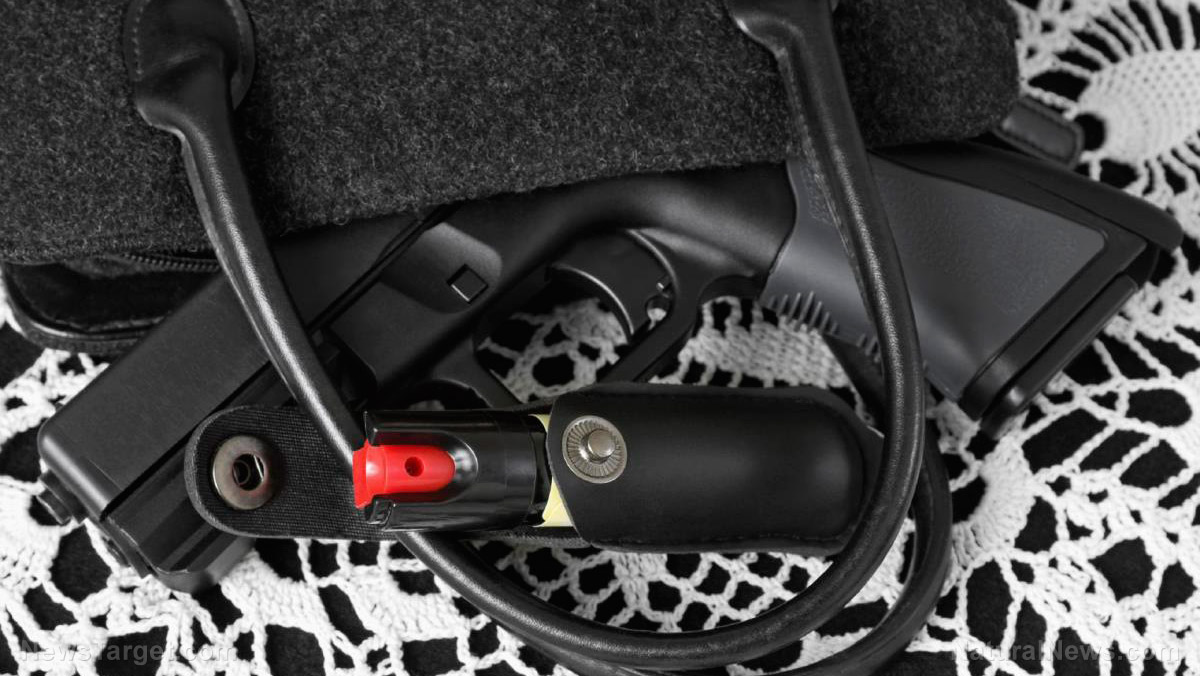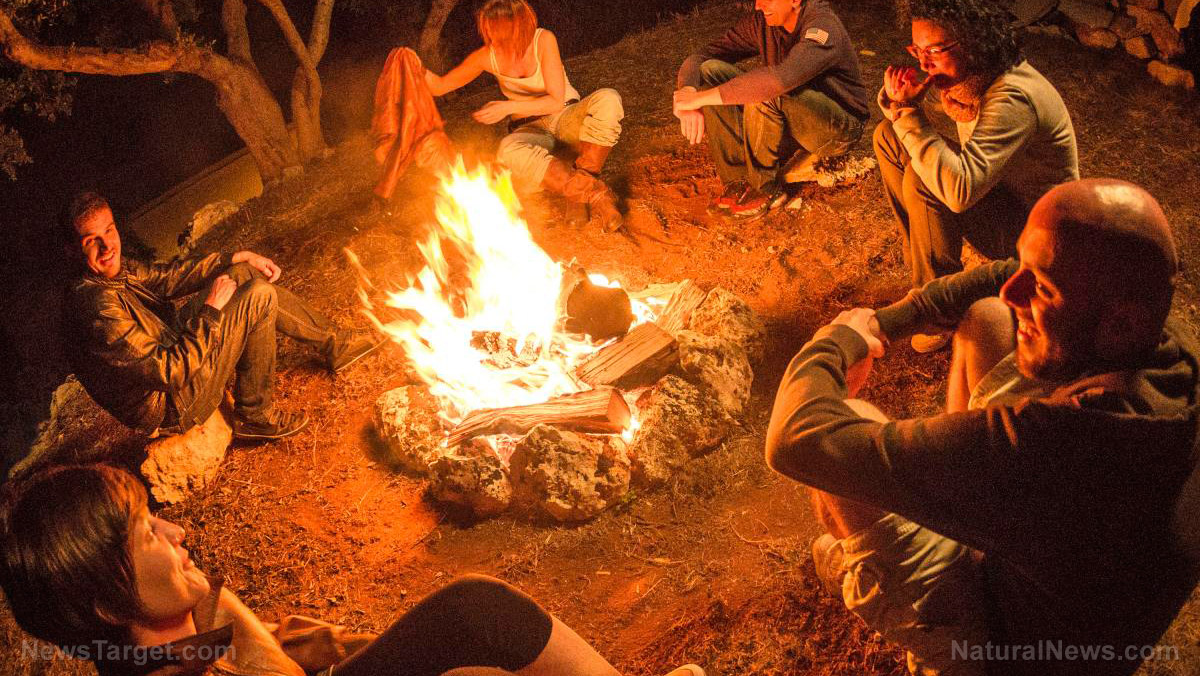Prepping essentials: 12 Survival uses for paracord
04/11/2022 / By Zoey Sky

When SHTF, your prepping supplies may be the only things that can help you survive dangerous scenarios like a natural disaster or societal collapse. And even if your life isn’t in danger, it’s good to have useful supplies like a parachute cord, or paracord, in your bug-out bag (BOB). (h/t to PreparednessAdvice.com)
Paracord is one of the most versatile items that you can add to your stockpile. This type of cordage has both a nylon sheath and tough inner strands. Here are 12 survival uses of paracord:
Backup fuel source
If you need to start a fire and are out of firewood, use paracord as an emergency fuel source. Paracord burns slowly and some kinds even come with a wick on the inside so it burns longer.
Even if you only have regular paracord, you can burn it slowly to keep the embers alive long enough to add more fuel and kindling on top. Paracord can also be used as a fire starter for the bow drill method. (Related: 6 Types of rope and why you need them for survival.)
Cross strap
If you’re bugging out, use paracord to make a cross strap for your BOB. This helps free up both hands so you can carry more supplies as you evacuate.
A cross strap creates a center of gravity between all the straps and bags and gives you a specific point to focus your energy. This can also help relieve the weight of all your baggage that may cut into your shoulders.
Dog harness
If you’re bugging out with a pet dog and lose their leash, use paracord to make a makeshift paracord dog harness.
Make sure the harness doesn’t come undone by practicing your knots before SHTF.
Knife or ax handle
If you’re using an old knife or ax and the rubber coating on the handle is almost gone, use a length of paracord to form a new handle for your tool. Tightly weave paracord around the handles so you get a tactile grip for easier use.
Once you learn how to do this, you can make new handles or grips for other survival items.
Make a bow and arrow
This project can be a lifesaver if you’re bugging out and need to hunt food but don’t have a weapon.
First, find a sturdy branch that can be whittled into a bow stock. Use the paracord to make the bow for it.
For arrows, use paracord to create friction and seal the arrows. Sealing arrows means closing off the open-ended wood fibers that are left behind after sharpening an arrow with a knife.
If you don’t close the fibers, you’ll have splinters and wood shavings in your wood. This is bad because your arrows will split. Alternatively, you can wet the arrows and spin them over a fire for a short amount of time.
Emergency saw
You can use paracord as an emergency saw on materials like plastic. Unthread your paracord and work it like a saw by using friction.
Run one end of the paracord through the place you need to cut, then hold both ends and work them back and forth to build friction on the material. Eventually, you’ll cut the plastic.
Fishing line
Paracord is great as a makeshift fishing line, but you need to cut one end off the paracord. Use one of the inner threads as a fishing line.
No matter what color the paracord is on the outer sheath, it’s white on the inside. This ensures that enough light passes through the inner line and makes it less visible to fish in the water.
This won’t work very well in shallow water, but it will do wonders if the water is deep enough so the paracord can sink a bit. Do small drop lines with hooks attached.
Alternatively, you can tie the inner threads together to create a fishing net.
Makeshift paracord hammock
If you have enough paracord and are good with knots, you can weave a paracord hammock. With a coil of paracord, use simple weaving patterns to create a comfortable and safe harness that you can turn into a hammock.
Before SHTF, learn how to tie knots properly so your paracord hammock and knots don’t unravel when you’re bugging out.
- Bowline knot
- Cobra knot
- Double sheet bend or weaver’s knot
- Figure-eight knot
- Monkey fist knot
- Overhand knot
- Power cinch knot or trucker’s hitch knot
- Square knot
- Taut-line hitch knot
Pulley system
Use paracord to form a pulley system for hauling your gear and supplies. You can also use a paracord pulley system to hoist your backpack up into a tree to keep it safe from predators like bears.
Shoelace replacements
If your shoelaces break while hiking, replace them with a length of paracord.
Snares and traps
With the right knots, you can use paracord to make snares and traps to catch small animals like birds and squirrels for food. Remove the inner strands to make deadfall triggers, one of the most common mechanisms used in trap hunting.
Another option is to use inner strands to hoist up rabbit traps from low-hanging branches.
Tie wood together
As cordage, paracord is great for tying bamboo or wood together to create a stable stand for an emergency shelter.
Clear the ground and then piece tree branches together to drape an emergency blanket over. Make two A-shaped stands with big branches and use a paracord to secure the branches. Use the right knots so the frame is secured properly.
In the right hands, paracord is one of the most useful survival tools.
Watch the video below for tips on how to make a snare trap using paracord or wire.
This video is from the SHTFPrepping101 channel on Brighteon.com.
More related stories:
A basic list of winter survival items you should carry in your car.
Tips on building pocket survival kits.
Prepare for common survival scenarios by stocking up on these lifesaving tools.
Sources include:
Submit a correction >>
Tagged Under:
bug out, bug out bag, disaster, Gear, off grid, parachute cord, paracord, preparedness, prepper, prepper tools, prepping, SHTF, survival, survival bag, survival gear, tips, tools
This article may contain statements that reflect the opinion of the author
RECENT NEWS & ARTICLES
COPYRIGHT © 2017 PREPAREDNESS NEWS




















